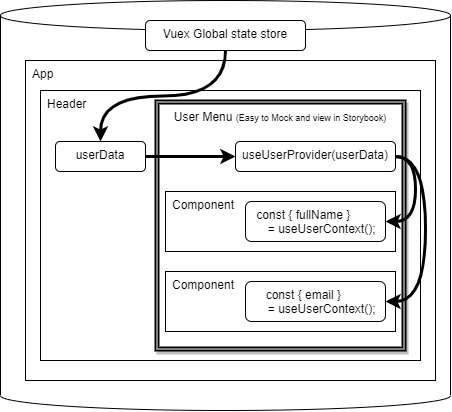̶R̶e̶a̶c̶t̶ VUE Context Provider Pattern With Custom Hooks
Learn how to use React context provider pattern with Vue Composition API. Find out the benefits and advantages of this pattern using code examples inside the sandbox.
Join the DZone community and get the full member experience.
Join For FreeThe Problem
Vue has lots of tools out of the box that makes our life easier, e.g Vuex and Vue-router. But, it still relies too much on magical connections, which makes code hard to understand. In order to help IDE and future me with code readability, I've started to think about hooks and patterns that come along with them.
The Code
In this sandbox, you can find React's Context Provider Pattern applied to Vue's Composition API provide and inject methods.
The Conclusion
Vue has a very powerful plugin Vuex for state management. But, often, you are unable to share the state in a simpler way or to multiply the same state functionality. Therefore, you have two standard solutions, props drilling and provide/inject. Drilling is good as long it's no deeper than 3 levels. But provide/inject, in their raw form, are relying too much on magic for my taste.

An important note: This pattern is not intended to replace Vuex, but to complement it. The rule of thumb here is to have the Vuex store for the global state and the Context state for a group of components. For E.g, Vuex is used to bring userData inside the Header Component, closer to the User Menu. And the User Menu Root Component is passing data from Store to its atomic components via Context Provider pattern using under the hood provide and inject.
This gives us Decoupled Components that are easy to run and test separately with Storybook, Mocks, Jest Snapshot, etc.
The Takeaway
If Composition API borrows so much from React already, why not keep that in mind and make Vue more lovable by combining the best of both worlds? Don't be afraid to experiment by mixing features and patterns for the greater good.
Published at DZone with permission of Eugene Sincovschi. See the original article here.
Opinions expressed by DZone contributors are their own.

Comments